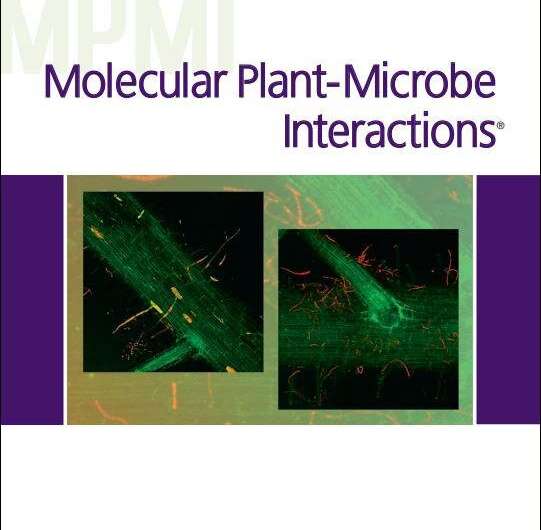The plant hormone auxin may promote disease by regulating virulence gene expression

Scientists have long known that the plant hormone auxin controls many aspects of plant growth, development, and responses to the environment. Only more recently have they begun to understand that there is also a link between auxin and leaf spotting diseases.
Several years ago scientists, including Barbara Kunkel, discovered an increased concentration of auxin in leaves inoculated by the bacterial pathogen, Pseudomonas syringae, that causes bacterial spot and speck diseases on many plants.
"We previously demonstrated that auxin promotes disease caused by P. syringae on Arabidopsis thaliana plants, which means that auxin is not acting as a classic plant defense hormone," Kunkel explained. "We were also one group to demonstrate that auxin also suppresses salicylic acid (SA)-mediated plant defense responses."
However, Kunkel and her colleagues knew there was more work to be done. "It was clear that there was a second role for auxin in P. syringae infection, that appeared to be independent of modulating SA-mediated defenses." In a new article, "Dual Role of Auxin in Regulating Plant Defense and Bacterial Virulence Gene Expression During Pseudomonas syringae PtoDC3000 Pathogenesis," published in the MPMI journal, Kunkel and colleagues at Washington University in St. Louis and the University of California San Diego present the first investigation of the role of auxin in regulating pathogen gene expression in plant tissue.
This article makes two new contributions to our understanding of the role of auxin during P. syringae infection of Arabidopsis thaliana plants. First, the research demonstrated that the canonical host auxin signaling pathway is required to suppress SA-mediated host defense and normal diseases susceptibility to P. syringae. Second, auxin plays a second role in promoting disease by regulating virulence gene expression in P. syringae.
"Our data led us to propose a working model in which auxin acts as a signal to the pathogen to switch from an early state of infection to a later stage that requires expression of a second set of virulence genes," Kunkel said. "There have been several reports that bacteria can respond to auxin and auxin has begun to be considered as a potential microbial signaling molecule. However, to the best of our knowledge, this is the first time a biologically relevant example has been demonstrated. This is an exciting breakthrough in plant-microbe interactions."
This work provides another example of how plant hormones can be used by microbes as an environmental cue, which seems to be emerging as a common strategy as scientists learn more about how pathogens and parasites sense their plant hosts.
More information: Arnaud T. Djami-Tchatchou et al, Dual Role of Auxin in Regulating Plant Defense and Bacterial Virulence Gene Expression During Pseudomonas syringae PtoDC3000 Pathogenesis, Molecular Plant-Microbe Interactions (2020). DOI: 10.1094/MPMI-02-20-0047-R
Journal information: Molecular Plant-Microbe Interactions
Provided by American Phytopathological Society




















